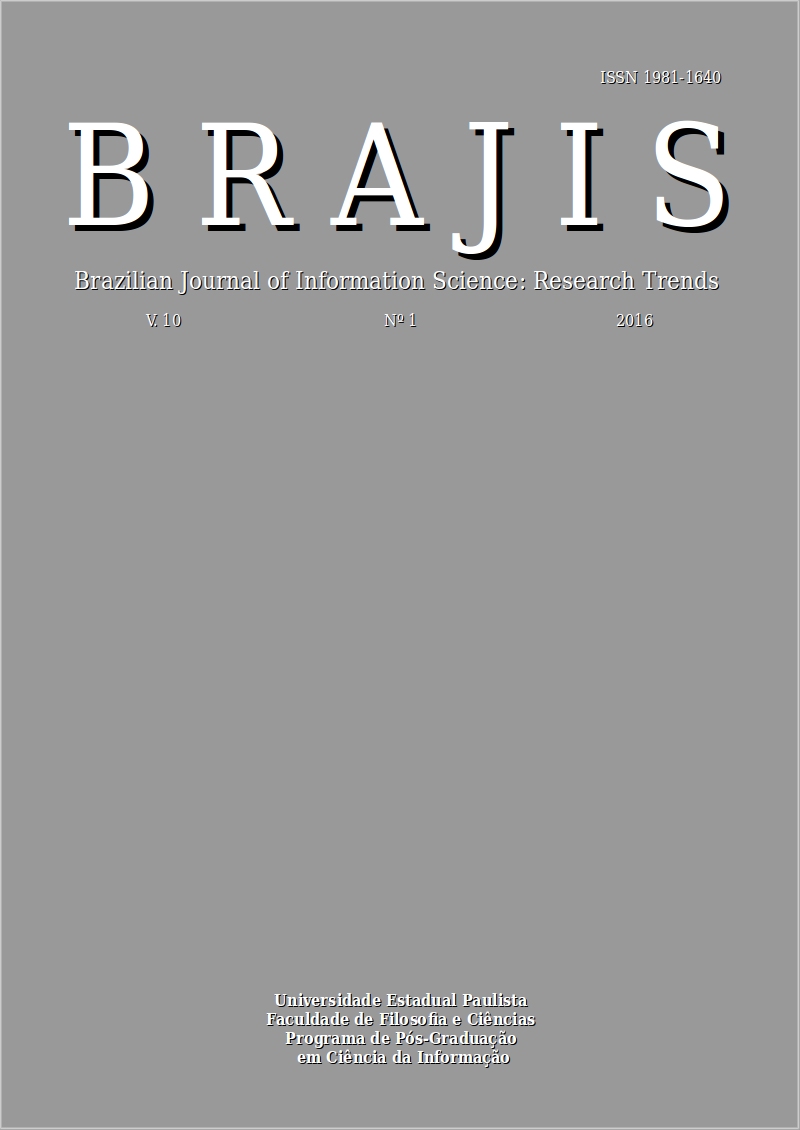OntoForInfoScience
a detailed methodology for construction of ontologies and its application in the blood domain
DOI:
https://doi.org/10.36311/1981-1640.2016.v10n1.02.p12Palabras clave:
ontologies, ontologies development, biomedical ontologies, hematologyResumen
Ontologies are instruments of knowledge organization that have been developed through several methodologies. These methodologies are well established, but their steps often are not well explained. Thus, only knowledge engineers are able to perform all steps required in the development of ontologies. Here, we describe a methodology that details each step of the ontology development cycle. The goal of this methodology - called OntoForInfoScience - is to overcome issues of technical jargon and logical-philosophical principles faced by experts in Knowledge Organization from the field of Information Science. These are the usual issues when one deals with and constructs ontologies. In order to identify those issues, our methodology was produced by information scientists during the development of ontology in the blood domain. This ontology, called Hemonto, is domain ontology about blood components under development within the scope of a scientific project. In this paper, we present a brief description of OntoForInfoScience, as well as the practical results of the development of the blood ontology. We conclude that the new methodology is useful for information scientists when creating formal ontological representations. In addition to the methodology per se, our research also provides partial results of the HEMONTO development.
Descargas
Referencias
Descargas
Publicado
Número
Sección
Licencia
Al someter un artículo, los autores conservan los derechos de autor del artículo, otorgando todos los derechos para el Brazilian Journal of Information Science: research trends para publicar el texto.
El(los) autor(es) acuerdan que el artículo, si se acepta editorialmente para su publicación, tendrá licencia bajo Creative Commons Attribution-ShareAlike 4.0 International (CC BY-SA 4.0) (http://creativecommons.org/licenses/by-sa /4.0).
Los lectores/usuarios son libres para:
- Compartir - copiar y redistribuir el material en cualquier medio o formato.
- Adaptar - remezclar, transformar y construir sobre el material para cualquier propósito, incluso comercialmente.
El licenciante no puede revocar estas libertades mientras siga los términos de la licencia. Bajo los siguientes términos:
- Atribución: debe otorgar el crédito apropiado, proporcionar un enlace a la licencia e indicar si se realizaron cambios. Puede hacerlo de manera razonable, pero de ninguna manera que sugiera que el licenciante lo respalda en su uso.
Compartir igual: si remezcla, transforma o desarrolla el material, debe distribuir sus contribuciones bajo la misma licencia que el original.
Sin restricciones adicionales: no puede aplicar términos legales o medidas tecnológicas que restrinjan legalmente a otros de hacer cualquier cosa que la licencia permita.
Avisos:
- No tiene que cumplir con la licencia para elementos del material de dominio público o cuando su uso esté permitido por una excepción o limitación aplicable.
- No se otorgan garantías. Es posible que la licencia no le otorgue todos los permisos necesarios para su uso previsto. Por ejemplo, otros derechos como publicidad, privacidad o derechos morales pueden limitar la forma en que usa el material.
 Creative Commons Attribution-ShareAlike 4.0 International License
Creative Commons Attribution-ShareAlike 4.0 International License









